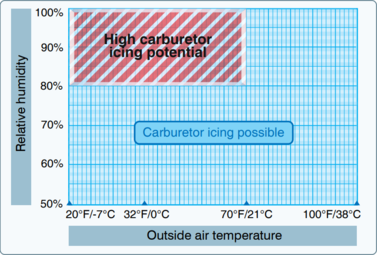
A carburetor is a device used by a gasoline internal combustion engine to control and mix air and fuel entering the engine. The primary method of adding fuel to the intake air is through the Venturi tube in the main metering circuit, though various other components are also used to provide extra fuel or air in specific circumstances.
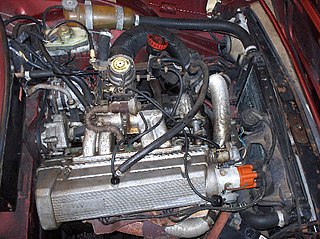
In internal combustion engines, exhaust gas recirculation (EGR) is a nitrogen oxide (NOx) emissions reduction technique used in petrol/gasoline, diesel engines and some hydrogen engines. EGR works by recirculating a portion of an engine's exhaust gas back to the engine cylinders. The exhaust gas displaces atmospheric air and reduces O2 in the combustion chamber. Reducing the amount of oxygen reduces the amount of fuel that can burn in the cylinder thereby reducing peak in-cylinder temperatures. The actual amount of recirculated exhaust gas varies with the engine operating parameters.
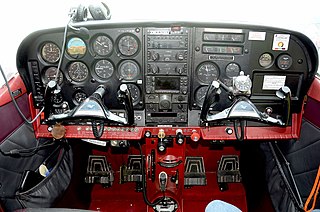
Aircraft engine controls provide a means for the pilot to control and monitor the operation of the aircraft's powerplant. This article describes controls used with a basic internal-combustion engine driving a propeller. Some optional or more advanced configurations are described at the end of the article. Jet turbine engines use different operating principles and have their own sets of controls and sensors.
Bleed air in aerospace engineering is compressed air taken from the compressor stage of a gas turbine, upstream of its fuel-burning sections. Automatic air supply and cabin pressure controller (ASCPC) valves bleed air from low or high stage engine compressor sections; low stage air is used during high power setting operation, and high stage air is used during descent and other low power setting operations. Bleed air from that system can be utilized for internal cooling of the engine, cross-starting another engine, engine and airframe anti-icing, cabin pressurization, pneumatic actuators, air-driven motors, pressurizing the hydraulic reservoir, and waste and water storage tanks. Some engine maintenance manuals refer to such systems as "customer bleed air".
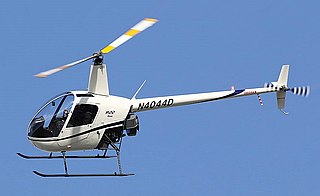
The Robinson R22 is a two-seat, two-bladed, single-engined, light utility helicopter manufactured by Robinson Helicopter Company. It was designed in 1973 by Frank D. Robinson, and has been in production since 1979.

An inlet manifold or intake manifold is the part of an internal combustion engine that supplies the fuel/air mixture to the cylinders. The word manifold comes from the Old English word manigfeald and refers to the multiplying of one (pipe) into many.
Manifold vacuum, or engine vacuum in an internal combustion engine is the difference in air pressure between the engine's intake manifold and Earth's atmosphere.

A ram-air intake is any intake design which uses the dynamic air pressure created by vehicle motion, or ram pressure, to increase the static air pressure inside of the intake manifold on an internal combustion engine, thus allowing a greater massflow through the engine and hence increasing engine power.
Carburetor heat is a system used in automobile and piston-powered light aircraft engines to prevent or clear carburetor icing. It consists of a moveable flap which draws hot air into the engine intake. The air is drawn from the heat stove, a metal plate around the exhaust manifold.
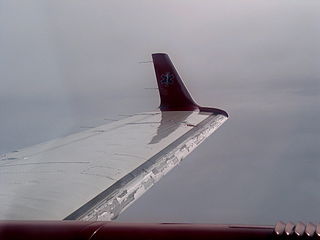
In aviation, icing conditions are atmospheric conditions that can lead to the formation of water ice on an aircraft. Ice accretion and accumulation can affect the external surfaces of an aircraft – in which case it is referred to as airframe icing – or the engine, resulting in carburetor icing, air inlet icing or more generically engine icing. These phenomena may possibly but do not necessarily occur together. Both airframe and engine icing have resulted in numerous fatal accidents in aviation history.

Atmospheric icing occurs in the atmosphere when water droplets suspended in air freeze on objects they come in contact with. It is not the same as freezing rain, which is caused directly by precipitation. Icing conditions can be particularly dangerous to aircraft, as the built-up ice changes the aerodynamics of the flight surfaces and airframe, which can increase the risk of a stall and potentially accidents. For this reason, on-board ice protection systems have been developed on aircraft intended to fly through these conditions.
A rev limiter is a device fitted in modern vehicles that have internal combustion engines. They are intended to protect an engine by restricting its maximum rotational speed, measured in revolutions per minute (RPM). Rev limiters are pre-set by the engine manufacturer. There are also aftermarket units where a separate controller is installed using a custom RPM setting. A limiter prevents a vehicle's engine from being pushed beyond the manufacturer's limit, known as the redline. At some point beyond the redline, engine damage may occur.
A throttle is a mechanism by which fluid flow is managed by constriction or obstruction.
The Quadrajet is a four barrel carburetor, made by the Rochester Products Division of General Motors. Its first application was the new-for-1965 Chevy 396ci engine. Its last application was on the 1990 Oldsmobile 307 V8 engine, which was last used in the Cadillac Brougham and full size station wagons made by Chevrolet, Pontiac, Oldsmobile, and Buick.
A pressure carburetor is a type of fuel metering system manufactured by the Bendix Corporation for piston aircraft engines, starting in the 1940s. It is recognized as an early type of throttle-body fuel injection and was developed to prevent fuel starvation during inverted flight.

This article briefly describes the components and systems found in jet engines.
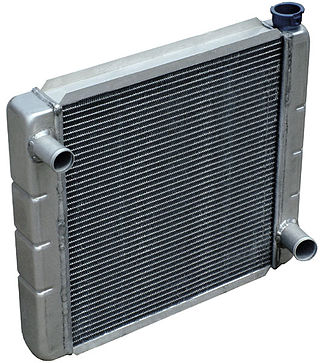
Radiators are heat exchangers used for cooling internal combustion engines, mainly in automobiles but also in piston-engined aircraft, railway locomotives, motorcycles, stationary generating plants or any similar use of such an engine.

The SU carburettor was a constant-depression carburettor made by a British manufacturer of that name or its licensees in various designs spanning most of the twentieth century.
Internal combustion engines come in a wide variety of types, but have certain family resemblances, and thus share many common types of components.
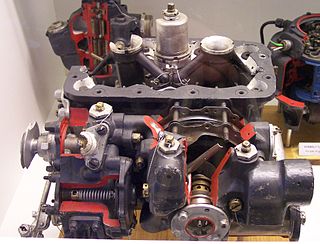
Of the three types of carburetors used on large, high-performance aircraft engines manufactured in the United States during World War II, the Bendix-Stromberg pressure carburetor was the one most commonly found. The other two carburetor types were manufactured by Chandler Groves and Chandler Evans Control Systems (CECO). Both of these types of carburetors had a relatively large number of internal parts, and in the case of the Holley Carburetor, there were complications in its "variable venturi" design.

